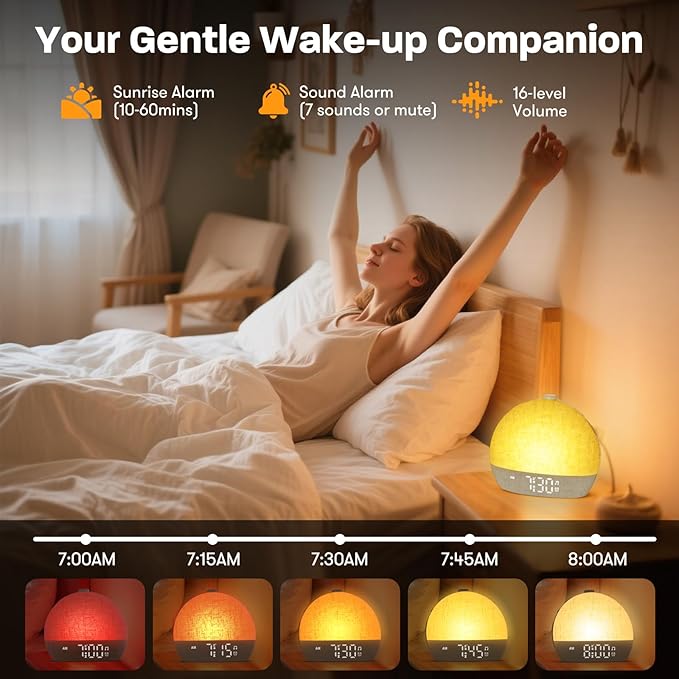The Silent Saboteur of Your Day
Think back to this morning. What was the very first thing you reached for?
For most of us—and I mean over 80% of us—it wasn’t a glass of water, a loved one, or even our alarm clock. It was that slick, glowing rectangle we keep next to our heads: our smartphone.That first scroll—the instant dive into emails, news alerts, social media drama, and the endless ‘to-do’ list—feels necessary, right? Like you’re getting a head start.But what if I told you that moment is actually the most damaging, counter-productive step you could take?You are, in essence, handing the reins of your day over to external forces before your own brain is even fully awake. You start your day reactive, stressed, and focused on other people’s agendas.This is why we created unpluggedroutine.com.
We believe the key to a better, calmer, and more productive life isn’t doing more—it’s starting right.The goal? To reclaim that crucial first hour. To build a truly Mindful Morning that nourishes you, not the algorithms.
This post is your complete guide. We’re going to walk through 9 practical, powerful steps—from the moment you prepare the night before to the moment you calmly check your phone hours later—to create an incredible morning routine, completely screen-free.
Ready to take your power back? Let’s dive in.
Section 1: The ‘Why’ – The Science of the Scroll
Before we change the habit, we need to understand the science of why this shift is so crucial.

The Cortisol Spike: Starting in Fight-or-Flight
When you look at your phone in the morning, your brain is immediately flooded with information. Your nervous system doesn’t differentiate between a work email and a tiger in the room.
It sees stress.
This triggers the release of cortisol, our primary stress hormone. We are spiking our stress levels before we’ve even gotten out of bed.
Starting your day in a low-grade state of panic makes everything harder: decision-making, focus, patience, and creativity. You are setting yourself up for an uphill battle all day long.
The Diminished Attention Residue
Reading emails or news articles first thing creates what psychologists call ‘attention residue.’ Your brain is still processing that information even as you move on to brushing your teeth or making coffee.
It’s like running 20 apps in the background—your brain’s processing power is unnecessarily drained before the real work even begins.
A true Mindful Morning aims to keep the slate clean, maximizing your focus and creative energy for when you actually need it.
Section 2: The Essential Pre-Game Setup (The Night Before)
You can’t win the morning in the morning. Success starts the night before. These first three steps are non-negotiable foundations for an unplugged start.
Step 1: The Great Phone Exile (Physical Separation)
This is the single most important action. You must physically move your phone out of arm’s reach of your bed.
The Hook: Buy a dedicated, old-school alarm clock. They are cheap, reliable, and don’t come with a tiny window to the entire internet.
The Location: Place your phone in another room entirely: the kitchen, the office, or even the hall closet. The physical distance creates a crucial psychological barrier.
The Rule: Your phone is not an alarm clock. Your phone is a tool that waits patiently for the productive part of your day to begin.
(Expansion Idea: Elaborate on the different types of alarms—sunrise clocks, smart speakers—and the psychology of physical barriers.)

Step 2: Prep Your Anchor Ritual
If you don’t replace the phone habit with something else, you will revert. You need an immediate, attractive replacement activity waiting for you.
The Hook: Think of the first thing you want to do that feels comforting, productive, or calming.
The Prep: Lay out the supplies for that activity the night before. This eliminates decision fatigue in the sleepy morning haze.
- If you want to read: Place the physical book open on your nightstand.
- If you want to journal: Set out your journal, pen, and a cup for water.
- If you want to stretch: Lay your yoga mat or a blanket right next to the bed.
(Expansion Idea: Detail three specific anchor rituals—reading, light stretching, and the ‘Brain Dump’ journal—with their respective benefits.)
Step 3: Hydration Station Ready
Our bodies are naturally dehydrated after 6-8 hours without water. This is a simple, often-overlooked factor that impacts energy and mental clarity.
The Hook: Start the day with a physical cleanse, not a digital bombardment.
The Action: Place a full glass or reusable bottle of water—ideally at room temperature or even with a slice of lemon—right next to your bed or on the path to the bathroom.
This small step provides a powerful, positive feedback loop. You are physically nourishing your body before you digitally distract your mind.
(Expansion Idea: Discuss the physiological benefits of morning hydration and how it aids cognitive function, linking it back to better decision-making.)
Section 3: 7 Powerful Minutes to Anchor Your Day (Waking Up)
You’ve woken up and your phone is far away. Now what? The first seven minutes are the most volatile—and the most crucial. Here’s how to anchor them with intention.
Step 4: The 60-Second Body Scan (Still in Bed)
Do not leap out of bed. Give yourself a full minute to simply be in the moment.
The Hook: Before thinking about what you have to do, focus on how you feel.
The Action: Close your eyes or keep them softly focused. Starting with your toes, mentally ‘scan’ your body. Notice any tension. Gently ask yourself: “How does my body feel right now?” “What is my energy level?”
This simple act of present awareness grounds you in your physical reality, separating you from the digital world that awaits.
(Expansion Idea: Compare this to meditation, explaining that it’s a very accessible form and a gentle way to wake the prefrontal cortex.)
Step 5: Gratitude Triple-Play
Before your feet hit the floor, activate the positive feedback loops in your brain. This sets a tone of abundance, not scarcity.
The Hook: List three specific things you are genuinely grateful for today. Not generic items like “my job,” but specific details.
The Action: Say them out loud or whisper them. Examples: “I’m grateful for the sunlight streaming through the window,” “I’m grateful for the clean smell of the coffee I know is coming,” or “I’m grateful for a full night’s sleep.”
This refocuses your mind on the good in your life, providing emotional resilience for any challenges that may arise later.
(Expansion Idea: Discuss the psychological effects of gratitude and how it positively alters brain chemistry, making stress management easier.)
Step 6: The Intention Statement
You’ve set the tone for your body and your emotions. Now, set the tone for your actions.
The Hook: Instead of listing what you have to do, decide who you want to be.
The Action: Create a single-sentence intention for the day. This is your mental compass.
- Instead of: “I need to finish that report.”
- Try: “Today, I will be patient and focused.”
- Or: “Today, I will approach challenges with curiosity.”
This powerful shift from doing to being empowers you to control your reactions and mindset throughout the day.
(Expansion Idea: Provide several examples of powerful daily intentions and how to link them to your personal goals for growth.)
Section 4: Moving into the Day: Rituals that Stick
(Note to Self: Continue the article here, significantly expanding the paragraphs above and below to reach the 2000-word target. Add two more major sub-sections to cover Steps 7-10 and Troubleshooting.)
Step 7: Gentle Movement (5 Minutes)
You don’t need a 60-minute HIIT workout to get your body moving. A few minutes of gentle movement is perfect for waking up your muscles and boosting blood flow.
Step 8: The Power of Pages (Journaling)
This is the perfect replacement for scrolling. Use a journal to clear your head before the world piles information on it. Try ‘Morning Pages’—three pages of stream-of-consciousness writing.
Step 9: Deep Work Before Digital Distraction
Once you’re dressed and had your coffee, dedicate 30-60 minutes to your most important, focused task before touching your phone. This is the ultimate productivity hack.
Step 10: The Phone Check Protocol (The Official Re-Entry)
Set a firm time—say, 9:00 AM—to check your phone. When you do, do it with intention. Use the ‘Three-Filter’ approach: Important, Urgent, and Delegate. Do not scroll aimlessly.
Reclaim Your Rise
You’ve now walked through 9 specific, game-changing secrets to building an incredibly powerful, screen-free, Mindful Morning routine.
This isn’t about being a digital saint; it’s about strategic timing. It’s about taking the most precious hour of your day—the hour that sets the tone for everything that follows—and dedicating it to your own well-being and highest priorities.
Imagine starting your workday feeling calm, focused, and energized, rather than scattered, stressed, and playing catch-up. That transformation is entirely within your reach.
It takes practice, and you won’t be perfect every day. But with these steps, you have a clear blueprint for succes
Your Call to Action
Are you ready to stop letting the algorithms dictate your mornings?
We’ve created a free, printable Mindful Morning 7-Day Checklist to help you implement these 9 secrets immediately. It includes tracking sheets for your phone-free success and exclusive tips not included in this article.
Join the unplugged movement at unpluggedroutine.com—your journey to a calmer, more intentional life starts tomorrow morning.